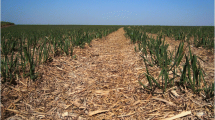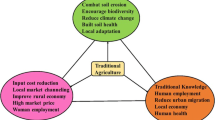Abstract
Horticultural practice in the Himalayas has great importance not only for economic development but also for environmental restoration. In the entire Himalayan mountain system, from Jammu and Kashmir Himalaya to Assam Himalaya, the practice of horticulture is centuries old, which includes varieties of fruits along with availability of high quality and quantity. In terms of the Alaknanda Basin, which is centrally located in the Himalayan system, the practice of horticulture does not get commercial level; only it is cultivated domestically.
The climatic conditions ranging from sub-tropical (low-lying river valleys) to alpine and frigid (highly elevated regions) are suited for varieties of fruit cultivation, yet the benefit of this could not be utilized by the residents who are working in the agricultural fields.
Besides, less proportion of land is devoted for fruit cultivation along with domestic production of fruits. The varieties of fruit cultivated in the basin range from mango-guava-papaya, stone-net, citrus to apple at the different elevations. Along with the cultivated fruits, varieties of wild fruits are also found in the jungle. There are four climatic zones suitable for the production of various fruits as below:
-
• Sub-tropical zone including the lower part of the Alaknanda, Pindar, Nandakini, and Mandakini rivers is suitable for mango, guava, and papaya;
-
• Sub-temperate zone in the middle basin of the Alaknanda, Pindar, Nandakini and Mandakini rivers is a good place for citrus fruits, particularly orange and lemon;
-
• Temperate zone occupying the Dauli, Vishnu Ganga, Upper Pinder, Nandakini and Mandakini rivers is highly productive for apple, nut and stone fruits;
-
• Alpine meadows in the highly elevated region are known as Bugyal famous for herb culture.
Each of these zones has distinct physical features, environmental conditions and socio-economic identity for fruit cultivation. The present paper aims to discuss about the vertical zonation of the horticultural farming and its nature, in terms of development, in the Alaknada Basin.
Similar content being viewed by others
References
Atkinson, E. T. 1889.The Himalayan Gazetteer Cosmo Publication, Delhi, Vol. II, Pp. 369–370.
Groetzbach, E. F. 1988. High Mountains as Human Habitat. In: NJR Allenet al. (eds.),Human Impact on Mountains, New Jersey: Rowman and Littlefield, Pp. 156.
Mehta, G. S. 1990. Problems and Potentials of Horticulture Development. In: Singh, A. K. (ed.),Planning Strategies for a Development Region. Lucknow: Print House, Pp. 67.
Nand, Nitya and Kumar, Kamlesh. 1989.The Holy Himalaya. Daya Publishing House Delhi. Pp. 36.
Papola, T. S. 1996. Planning for Environment and Economic Development in Mountain Areas: Concepts, Issues and Approaches. Discussion Paper No. MEI 96/2, Kathmandu, Nepal: ICIMOD, Pp. 43.
Sati, V. P. 2004.HOrticultural Development in Hills: A Case for the Alaknanda Basin. New Delhi, Mittal Publication. Pp. 123.
Sati, V. P. and Kumar, Kamlesh. 2004.Uttaranchal: Dilemma of Plenties and Scarcities. New Delhi, Mittal Publication, Pp. 197.
Saxena P. B. 1988.A Modern Approach in Geography (A): For the Evaluation of Soils and Land-Form-Systems of Land Use Planning in Himalayan Eco-System of the Alaknanda Basin (Garhwal Himalaya). Delhi, Concept Publishing Company. Pp. 38.
Whiteman, PTS. 1988. Mountain Agronomy in Ethiopia, Nepal and Pakistan. In: NJR Allenet al. (eds.),Human Impact on Mountians. New Jersey: Rowmand and Littlefield, Pp. 135.
Author information
Authors and Affiliations
Corresponding author
Rights and permissions
About this article
Cite this article
Sati, V.P. Vertical zonation of horticultural farming in the Alaknanda basin of Garhwal Himalaya, India. J. Mt. Sci. 2, 319–328 (2005). https://doi.org/10.1007/BF02918405
Received:
Accepted:
Issue Date:
DOI: https://doi.org/10.1007/BF02918405




